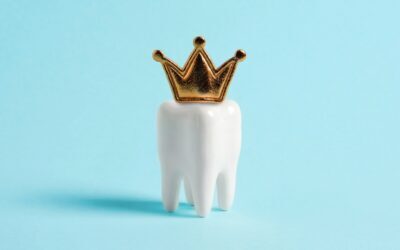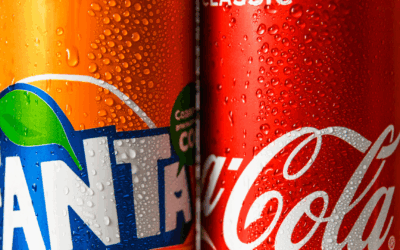Why Web Design and Content Marketing Are Inseparable
If you’ve ever clicked on a beautifully designed website, you know how instantly it shapes your impression. Clean layouts, fast load speeds, and intuitive navigation pull you in. But here’s the part most businesses overlook: your web design directly impacts the success of your content marketing strategy.
You could invest thousands in blog writing, videos, and infographics—but if your site frustrates users or hides content behind poor navigation, your marketing will never perform at its peak. In this guide, we’ll explore exactly how web design impacts content marketing, covering everything from user experience and SEO to common design mistakes that hurt your content. By the end, you’ll understand not only why design matters, but also how to align your web design with content goals to drive results.
Why Web Design Matters for Content Marketing
First Impressions Influence Content Engagement
The moment a visitor lands on your site, they form an opinion—often in less than a second. A Stanford study found that 75% of users judge a company’s credibility based on its website design. That judgment extends to your content. A cluttered or outdated design can make even the best blog post look untrustworthy.
In content marketing, first impressions dictate engagement: Will the reader scroll, click, and share—or bounce to a competitor? A strong design builds authority, increasing the chance that your content gets read and acted on.
User Experience Shapes Content Consumption
Even the most valuable article falls flat if users can’t read it comfortably. Design choices like font size, white space, and mobile responsiveness all affect how easily visitors consume content. A well-structured layout keeps readers engaged longer, reducing bounce rates and improving metrics like average session duration.
Good UX (user experience) also supports accessibility. Clear headings, easy-to-use menus, and logical page structure help all visitors—including those using screen readers—navigate your site. This not only enhances content performance but can improve SEO rankings.
Key Web Design Elements That Boost Content Marketing
Responsive and Mobile-Friendly Design
More than 60% of web traffic comes from mobile devices. If your content isn’t mobile-friendly, you’re losing visibility and trust. Google’s mobile-first indexing means your mobile site performance directly affects search rankings.
Responsive design ensures your blog posts, videos, and visuals adapt seamlessly to different screen sizes. For content marketing, this means your carefully written article remains easy to read whether on desktop, tablet, or smartphone.
Pro tip: Test your site with Google’s Mobile-Friendly Test to identify issues.
Navigation and Site Structure
Navigation is the backbone of content discovery. If your blog posts or resources are buried under complex menus, readers will give up. Clear navigation helps users (and search engines) understand your site hierarchy.
A strong internal linking strategy improves both SEO and user experience. For example, within a blog about web design, link to your content marketing services page or a related post about SEO best practices. This distributes link equity and encourages readers to explore more.
Page Speed and Performance
Site speed is no longer optional. According to Google, a delay of even one second in load time can reduce conversions by 20%.
Fast-loading websites make content more accessible and prevent readers from abandoning your page before it even loads. Optimize performance by compressing images, enabling browser caching, and using a content delivery network (CDN).
Typography, Formatting, and Visual Hierarchy
Content marketing thrives on readability. Design elements like typography, font size, and spacing determine how enjoyable your content is to consume. Long blocks of text overwhelm readers; instead, break content into scannable chunks with headers, bullet points, and visuals.
A clear visual hierarchy guides users’ eyes to the most important content. For example, bold H2 headers, highlighted quotes, and call-to-action buttons stand out naturally, leading readers through your content journey.
Multimedia Integration and Design Consistency
Today’s audiences expect multimedia. Videos, infographics, and high-quality images reinforce written content and increase engagement. Embedding explainer videos or data visualizations keeps users engaged longer, which can improve SEO signals like time on page.
Consistency also matters. If your blog looks drastically different from your homepage, it weakens brand identity. A consistent color palette, logo placement, and typography create a seamless experience across all content.
SEO Benefits of Combining Web Design and Content Marketing
How Design Supports On-Page SEO
SEO isn’t just about keywords. Proper heading structures (H1, H2, H3), schema markup, and clean URLs all depend on web design decisions. A site built with SEO in mind ensures your content is discoverable by search engines.
Meta descriptions, alt tags for images, and well-structured internal links reinforce SEO signals while enhancing accessibility.
Internal Linking and Content Distribution
Good design makes internal linking easy. For example, including a sidebar with “related posts” or a breadcrumb trail helps users explore more content while boosting link equity. This not only reduces bounce rates but also spreads authority across your site.
Accessibility and Inclusive Design
Accessibility is often overlooked in SEO, but it’s crucial. Alt text for images, ARIA labels, and clear contrast ratios improve both usability and search performance. Google rewards sites that make content accessible to all.
Common Web Design Mistakes That Hurt Content Marketing
- Overly Complex Navigation: Confuses users and buries content.
- Cluttered Layouts: Too many pop-ups, ads, or widgets distract from the content itself.
- Ignoring Mobile Optimization: Alienates a majority of your visitors.
- Slow Site Speed: Uncompressed images and bloated code cause high bounce rates.
These mistakes undo even the strongest content strategies.
Best Practices to Align Web Design With Content Marketing
- Collaborate Early: Involve designers, marketers, and SEO experts in the planning stage.
- Prioritize Testing: Use A/B testing and tools like Hotjar or Microsoft Clarity to see how users engage with your content.
- Focus on Consistency: Keep design elements uniform across all pages for stronger branding.
- Update Regularly: Web standards evolve. Regular audits ensure your design continues to support content performance.
FAQs About Web Design and Content Marketing
How does web design affect SEO and content marketing?
Design impacts how search engines crawl your site and how users interact with content. Fast, mobile-friendly, accessible designs perform best.
What role does website speed play in content marketing?
Slow sites lose readers before they can consume your content. Site speed directly impacts SEO and conversions.
Why is responsive design important for content strategy?
It ensures all users, regardless of device, can access and enjoy your content, improving reach and engagement.
How can internal linking improve both web design and content marketing?
It creates logical pathways for readers, encourages longer sessions, and distributes SEO authority across your site.
What’s the best way to make content more engaging through design?
Use clear typography, multimedia, white space, and visual hierarchy to make content scannable and appealing.
Turning Web Design Into a Content Marketing Advantage
Your content marketing success depends as much on how it’s presented as on what it says. Web design influences everything—SEO, user trust, engagement, and conversions.
The takeaway is clear: strong content requires strong design. By aligning your web design with your content marketing goals, you’ll not only attract more traffic but also keep users engaged long enough to convert.




